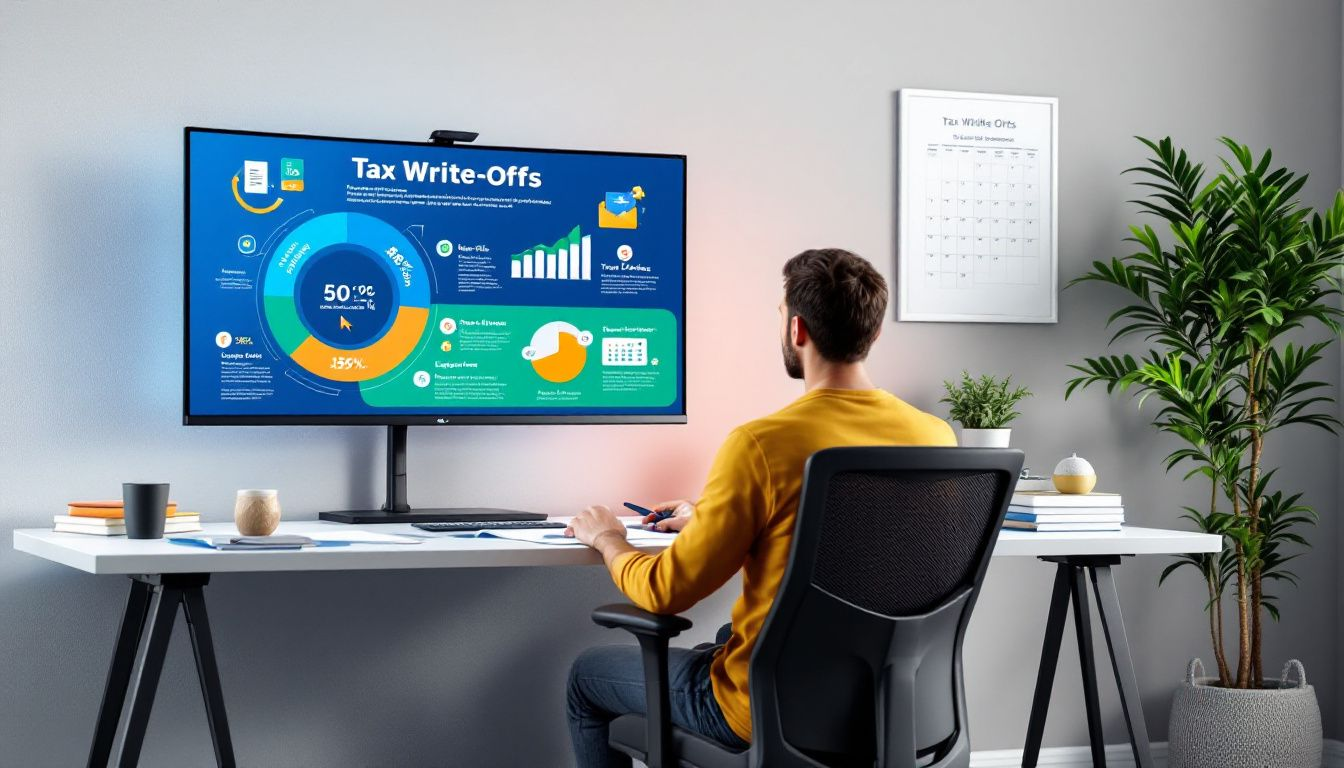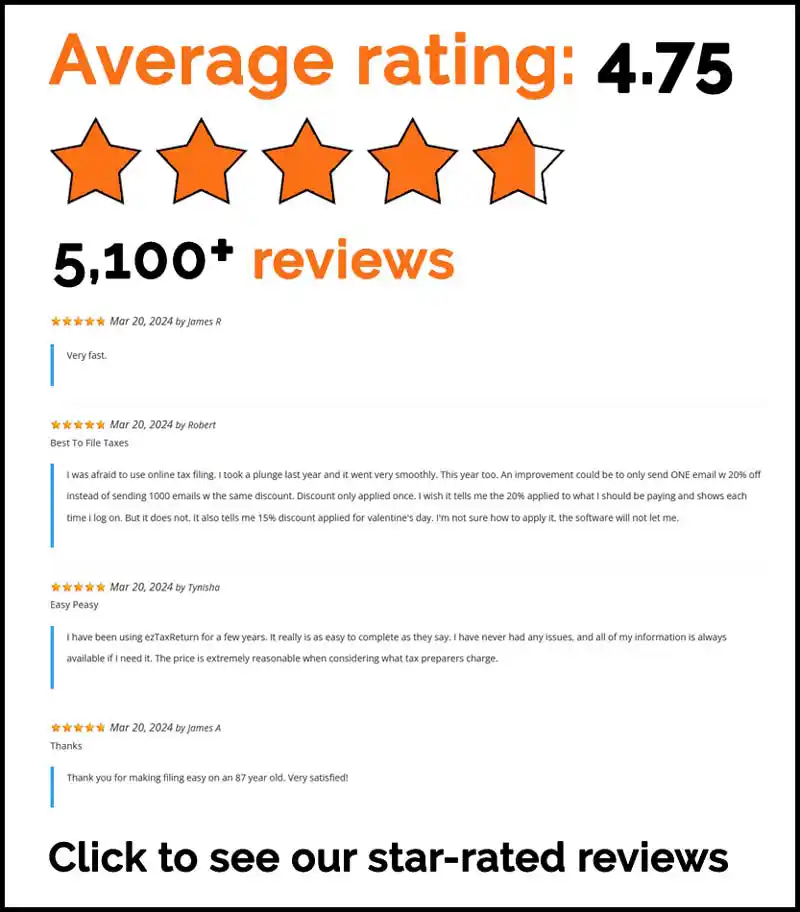The information in this article is up to date for tax year 2025 (returns filed in 2026).
Curious about tax write offs for working from home? You’re not alone. With more people operating businesses from home than ever before, understanding work from home deductions is crucial for reducing your tax bill. This guide breaks down what tax breaks are available, how to qualify, and the best methods for calculating and maximizing your deductions.
Key Takeaways
- Self-employed individuals can claim home office deductions on expenses like mortgage interest, utilities, and maintenance, but employees cannot.
- To qualify for the home office deduction, the space must be used regularly and exclusively for business activities, meeting both the exclusive use and principal place of business requirements.
- Eligible taxpayers can choose between the actual expense method or the simplified method for calculating deductions, with the simplified method being ideal for those with smaller home offices.
What Are Work From Home Deductions?

Work from home deductions are specific tax benefits that allow self-employed individuals to deduct certain expenses related to using a portion of their home exclusively for business. These tax write offs for working from home can include a percentage of your mortgage interest, utilities, repairs, and even homeowners insurance.
Whether you live in a house, apartment, or condo, if you use a dedicated space in your home regularly and solely for business, you could be eligible for these deductions. Even if you never meet clients at your home, using your space for administrative or operational tasks may qualify.
There are two main ways to calculate your home office deduction—the actual expense method and the simplified method. Each has its benefits, depending on your home office size and the level of record-keeping you’re comfortable with.
Who Qualifies for Tax Write Offs for Working from Home?
The IRS allows tax write offs for working from home only for self-employed individuals and small business owners—not W-2 employees. However, if you run a side hustle or freelance gig from your home, you might still qualify.
To claim work from home deductions, your office space must meet these two IRS rules:
Exclusive Use Test
The exclusive use test requires that the claimed office space be utilized solely for business purposes, without any personal use. This means that if you use a part of your home as an office, that space cannot double as a guest bedroom or play area for your kids. If you set up your laptop in the living room but also use that space for watching TV, it fails the exclusive use requirement.
For the home office deduction to apply, you must regularly and exclusively use a part of your home for business. This requirement ensures that the space is dedicated to your business activities and not for personal use. It’s a stringent rule, but it’s crucial for qualifying for the deduction.
Principal Place of Business Requirement
A home office can be considered the principal place of business if it is regularly and exclusively used for administrative tasks. This means that your home office should be the main location where you conduct your business activities, such as managing finances, scheduling, or other administrative duties.
To meet the principal place of business requirement, your home office must be the primary location for administrative or management activities. This ensures that the home office is central to your business operations, even if you occasionally work elsewhere or meet clients off-site.
To qualify for the deduction, small business owners and those conducting business from home must ensure their home office fulfills this criterion.
Methods to Calculate Home Office Deductions
When it comes to calculating home office deductions, eligible taxpayers have two main methods to choose from: the actual expense method and the simplified method. Each method has its own set of rules and benefits, and understanding which one suits your situation best can help maximize your deductions.
The deduction for home office expenses is based on the business percentage of the home that is used for business purposes. You can switch between methods each year without needing a specific reason.
Next, we’ll explore each method in more detail to help you decide which one might be more beneficial for your circumstances.
Simplified Method
The IRS offers a simplified deduction option, allowing taxpayers to claim a set amount per square foot, up to a limit, rather than itemizing actual expenses. This method allows for a deduction of $5 per square foot for up to 300 square feet of home office space, with a maximum deduction amount of $1,500.
The simplified method may be more beneficial if your home office is 300 square feet or less, and if you prefer less time spent on documentation. It’s a straightforward approach that can save time and hassle, especially for those with smaller home offices. Let ezTaxReturn guide you through every step. Log in now to start your tax return.
Actual Expense Method
The actual expense method allows for the full deduction of direct business expenses and a percentage deduction of indirect expenses based on the business use of the home. Direct expenses, such as repairs specific to the home office, are fully deductible, while indirect expenses, like utilities, are deductible based on the percentage of the home used to deduct expenses for a business expense.
You’ll need to file Form 8829 and keep detailed records, but this method can lead to larger tax write offs for working from home.
Common Work From Home Deductions
Below are some of the most common expenses that can be deducted when working from home:
- Mortgage interest
- Rent
- Utilities
- Maintenance costs
- Homeowners insurance
- Property taxes
To qualify as deductible, business expenses must be considered ordinary and necessary. The actual expense method requires calculating the percentage of the home used for business to determine deductible expenses.
Mortgage Interest and Rent
If you’re a homeowner, you can deduct a portion of your mortgage interest based on your office’s square footage. Renters can deduct a percentage of their monthly rent as part of their work from home deductions.
Correctly calculating and claiming these tax deductions can significantly reduce your taxable income and save money during tax season, potentially resulting in a tax break.
Utilities and Maintenance Costs
Expenses for utilities, such as electricity, water, and internet, can be deducted proportionately based on the size of the home office in relation to the entire home. Both direct and indirect expenses related to home utility bills and maintenance can be eligible for deduction.
Calculating the square footage of your home office and the total home, then applying this percentage to your utility costs, ensures you are deducting the correct amount of your tax write offs for working from home.
Homeowners Insurance and Property Taxes
A portion of your insurance premiums and property taxes may also be included in your work from home deductions, as long as the home office is used exclusively for business.
These deductions can add up, providing significant tax breaks that reduce your overall tax liability. Understanding how these expenses fit into your overall home office deduction strategy is crucial.
Special Considerations for Mixed-Use Spaces
When using a shared space for both business and personal purposes, it’s essential to calculate the portion used for business based on time and space allocation. Keeping thorough documentation, including photos and logs of business-related activities, can support claims for mixed-use deductions.
Accurately documenting the business use of mixed spaces will help you back up your tax write offs for working from home if audited.
Tax Write Offs for Self-Employed Individuals

Self-employed individuals can deduct ordinary and necessary business expenses, including utilities, rent, and office supplies. Only self-employed individuals can claim home office deductions after the 2018 tax reform.
Properly documenting which expenses qualify as tax write-offs can lead to significant savings on self-employment taxes and overall tax liability.
Record-Keeping Tips for Work From Home Deductions
Maintaining accurate business records reduces the chances of being audited by the IRS when claiming tax write offs for working from home. It’s essential to categorize and store receipts for purchases related to the home office to support your tax claims.
Organizing your tax records in digital storage or filing systems can facilitate easier access during tax filing. Using ezTaxReturn to file your taxes can make you aware of all eligible deductions and help avoid audits.
Will Home Office Deductions Affect My Home Sale?
If you have claimed home office deductions prior to selling your home, it may not significantly alter the capital gains tax implications. The exclusion of capital gains for home sales is generally available regardless of home office deductions, barring certain exceptions.
However, depreciation taken on the home office area might trigger additional tax consequences when selling the property. Understanding these potential impacts can help you make informed decisions when planning to sell your home.
Summary
Work from home deductions can offer major tax savings for self-employed individuals. Whether you’re a freelancer or small business owner, understanding how to calculate and claim tax write offs for working from home ensures you’re not leaving money on the table.
By choosing the right deduction method, keeping accurate records, and following IRS guidelines, you can confidently reduce your tax burden. ezTaxReturn makes it easy to claim all eligible deductions and file quickly.
Frequently Asked Questions
Who can claim home office deductions?
If you’re self-employed or a small business owner using a specific area of your home solely for work, you can claim home office deductions. Just make sure that space is used exclusively and regularly for your business activities!
What is the exclusive use test?
The exclusive use test means that the office space you claim must be used only for business and not for any personal activities. If you’re keeping it strictly professional, you’ll meet this requirement!
How do I calculate home office deductions using the simplified method?
You can easily calculate your home office deduction using the simplified method by multiplying the square footage of your office space by $5, with a maximum of 300 square feet, which means you could potentially deduct up to $1,500. Just measure your space, do the math, and you’re good to go!
Can I deduct utilities for my home office?
Absolutely, you can deduct utilities like electricity and internet for your home office! Just remember to calculate the deduction based on the proportion of your office space compared to your entire home.
How does claiming home office deductions impact the sale of my home?
Claiming home office deductions can impact the sale of your home, especially if you’ve taken depreciation on that area, which might lead to additional tax when you sell. It’s important to be aware of these potential tax consequences when you file your taxes or plan to sell.
The articles and content published on this blog are provided for informational purposes only. The information presented is not intended to be, and should not be taken as, legal, financial, or professional advice. Readers are advised to seek appropriate professional guidance and conduct their own due diligence before making any decisions based on the information provided.




